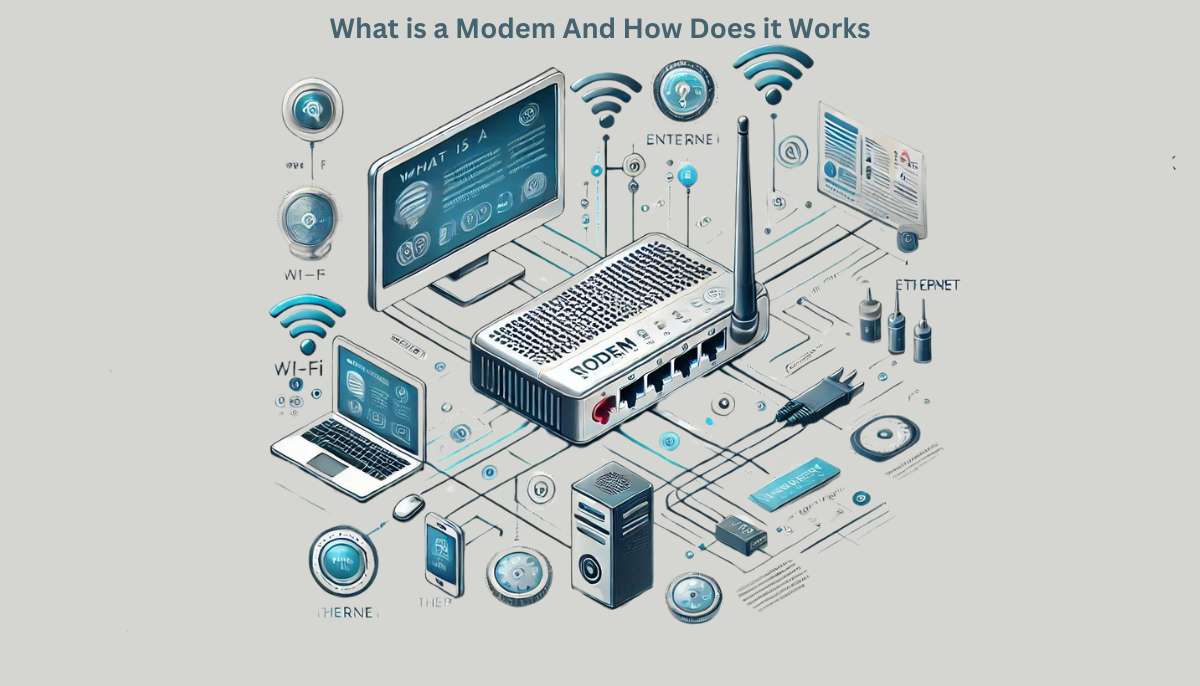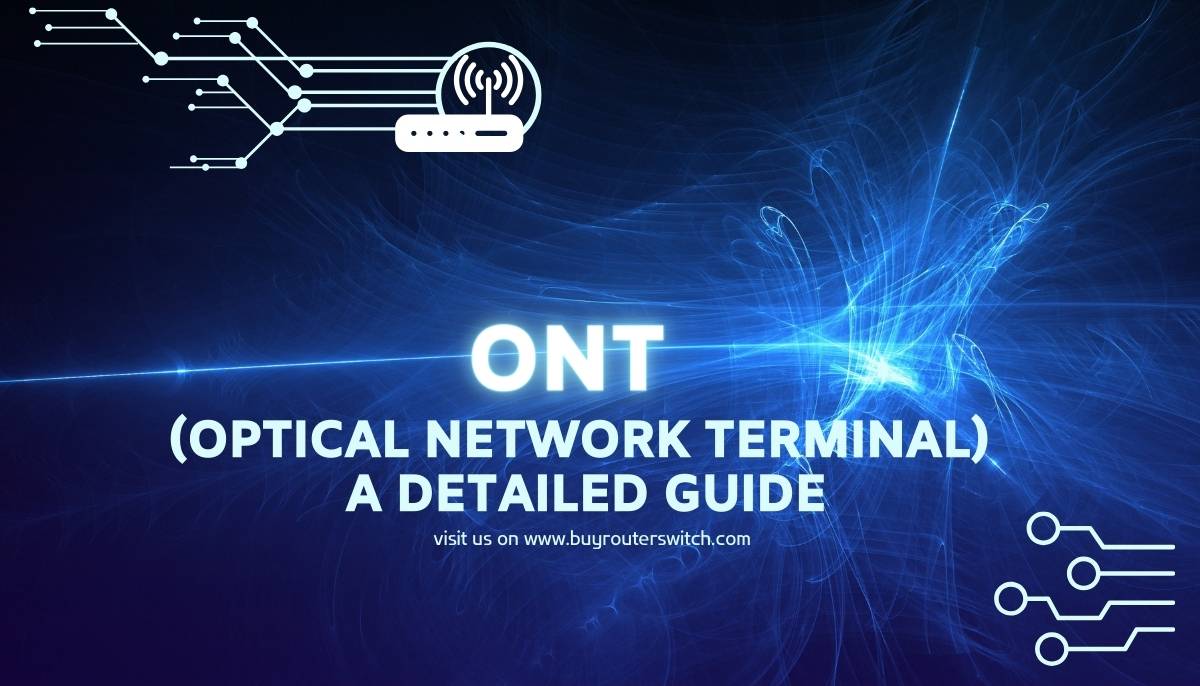Fiber Optic Modem Guide: Benefits, Setup, and Performance Tips
Table of content
Introduction:
In this era of rapid evolution in the IT industry, considering emerging and advanced networking equipment to achieve organizational goals becomes crucial. This is where a fiber optic modem comes into discussion. Fiber optic modem works unlike a traditional DSL modem and offers much higher speed and other advanced features than a traditional modem. Besides, it has a number of advantages that have never been witnessed before, and that’s what makes it a perfect choice for many organizations and individuals. In this blog post, we will delve into Fiber optic modems, fiber internet modems, and fiber optic modem routers to let you choose the best fiber optic modem according to your network’s requirements.
What Is A Fiber Optic Modem?

A fiber internet modem or a fiber optic modem serves to connect an electronic device like a computer to a network or to the internet. Fiber optic modems are different from conventional modems as they use fiber optic cables instead of copper cables for signal transmission. These modems transform electronic signals through fiber-optic networks and are used mostly in various applications like data communication network systems, inter-network communication systems, and more. In simple words, a fiber internet modem converts electrical communication into optical signals using fiber optic cable assemblies.
Working Of A Fiber Optic Modem:
A fiber optic modem works in comprehensive ways. Through fiber optic cable assemblies, it receives optical signals and translates them back into electrical form for full-duplex transmission. It provides a secure and easy-to-manage optical connection along with tactical fiber optic cables. To put the FOM’s working into the simplest words, we have mentioned some points here:
- The internet signals are forwarded to the fiber optic modems through fiber optic cable assemblies.
- Then, FOM converts these internet signals into electrical form.
FOM supports full-duplex transmission, which means data can travel back and forth between internet sources and electrical devices at the same time.
Working Foundations Of A Fiber Optic Modem:
How does a Fiber optic modem work? The answer is here if the same question is bubbling in your mind. Simply, every activity of a fiber optic modem revolves around the transmission of data using light signals via fiber optic cables. However, it will be of much significance to give a few words to each principle separately:
Data Transmission:
The fiber optic modem receives electrical signals from the linked network device like a computer or any other device to represent the digital data that are going to be transmitted.
Signal Conversion:
The FOM converts the electrical signals into optical signals using a transmitter. The transmitter contains a light source, usually a laser or LED, which emits light pulses. The intensity or absence of these light pulses represents the binary data (0s and 1s) being transmitted.
Modulation:
The optical signals are then modulated using amplitude modulation or frequency modulation. Modulation enables the optical signal to forward more data and increases its capability to withstand long-distance transmission.
Fiber Optic Cable Transmission:
The modulated optical signals are sent using the fiber optic cable, which is composed of a core and a cladding layer. The core is a thin strand of glass or plastic that forwards the light signals, while the cladding layer offers a protective covering.
Signal Reception:
Another fiber optic modem or device receives the modulated optical signals at the receiving end. The receiver in the modem translates the optical signals into electrical signals once again.
Signal Processing:
The electrical signals are again sent back to their original form. The modem prepares the data for further transmission to the connected network device.
Data Communication:
These signals are then sent to the linked network device, such as a computer or router, for further processing. This allows communication and data exchange within the network ecosystem.
Features Of A Fiber Optic Modem:

Have you ever heard saying someone, ‘The best fiber optic modem’, or Fiber optic modem router? You must have. The reason is fiber internet modems have got so much popularity now a days and plenty of networking administrators are considering fiber optic modem router and fiber internet modem at their set up place. Thus, go through the following points to discover why fiber optic modem are so popular today:
Fiber Optic Interface:
Fiber internet modems have optical ports like SC, LC, or ST connectors to connect to the fiber optic cable infrastructure. These ports are capable of transmitting and receiving optical signals.
High-Speed Data Transfer:
Fiber internet modems or fiber optic modems are suitable for high bandwidth applications since they offer high-speed data transfer. They can support multi-giga bit and even terabit data transfer rates.
EMI:
Immunity to Electromagnetic Interference or EMI is an advanced feature in fiber optic modems that is not available in copper-based connections. This immunity guarantees a resilient performance even in unwanted conditions like electrical interference.
Safe and Secure Data Transmission:
As it is not easy to access optical signals without accessing the cable, fiber optical modems are perfect for sending and transmitting sensitive or confidential data.
Long-Distance Connectivity:
Without causing any signal degradation, fiber internet modems can transmit data over long distances. Besides, they can extend these capabilities that are required for remote locations.
Compact and Lightweight:
Fiber optic modems or fiber optic modem routers are easy to integrate and install in any type of network setup as they are compact and lightweight.
Compatibility:
Fiber optic modems are compatible with different standards and network protocols like Ethernet, SONET/SDH, and Fiber Channel. This coherence makes them versatile for various applications.
Reliability and Redundancy:
Fiber internet modems or fiber optic modem routers guarantee network reliability, providing backup tracks in case of any failure or cable disconnection.
LED or Laser Transmitters:
Fiber internet modems use laser or LED transmitters to translate electrical signals into optical signals according to the application’s needs. These transmitters support high-speed data transfer and long-distance transmission.
Managed and Unmanaged Options:
Fiber optic modems have both managed and unmanaged varieties. Managed fiber internet modems provide advanced features and can be configured remotely for network monitoring and optimization.
Conclusion:
If you have gone through this blog deeply, we hope that you have learned a lot about fiber optic modems. We have discussed fiber internet modems, their uses, working principles, and features to give you a complete picture of the best fiber optic modem. We suggest you keep visiting Buyrouterswitch when you need any help regarding modems, routers, or any other Networking Accessories. Thank you.
Frequently Asked Questions:
Do you need a special modem for fiber optic internet?
Simply, a fiber optic modem doesn’t need a modem. However, it requires an ONT and a fiber-ready router. You can enjoy the full potential of your fiber internet connection with the right equipment.
What is the difference between a fiber modem and a router?
Just like the fundamental concept of a modem, a fiber optic is intended to send and receive signals from an internet service provider (ISP). In most setups, a modem is attached to a router, which distributes internet connections to various devices.
Is a cable modem the same as a fiber modem?
Modems aren’t really used in fiber optics. Fiber, on the other hand, makes use of an increasingly sophisticated device known as an Optical Network Terminal (ONT). An ONT converts light signals into data for your devices and offers a consistent and fast internet speed.




 Catalog
Catalog





















































































































 (800) 870-9487
(800) 870-9487